waybackmachine
KVI-CARTHow time caught up to the ‘energy of the future’
Yellow signs on the road to the KVI warn drivers to to stay below 10 kilometres per hour, not just for safety’s sake, but also to prevent vibrations.
The signs aren’t just there because it would be dangerous if people drove too fast. And the KVI wasn’t built all the way over in this corner because of radiation, either. Rather, the vibrations caused by vehicles can disrupt experiments that use lasers. As far as radiation is concerned, there’s actually more radiation outside the building than inside the bunker’s thick walls.
But the particle accelerator did mean the UG was an international frontrunner in the field of fundamental research on the characteristics of atomic nuclei for more than half a century.
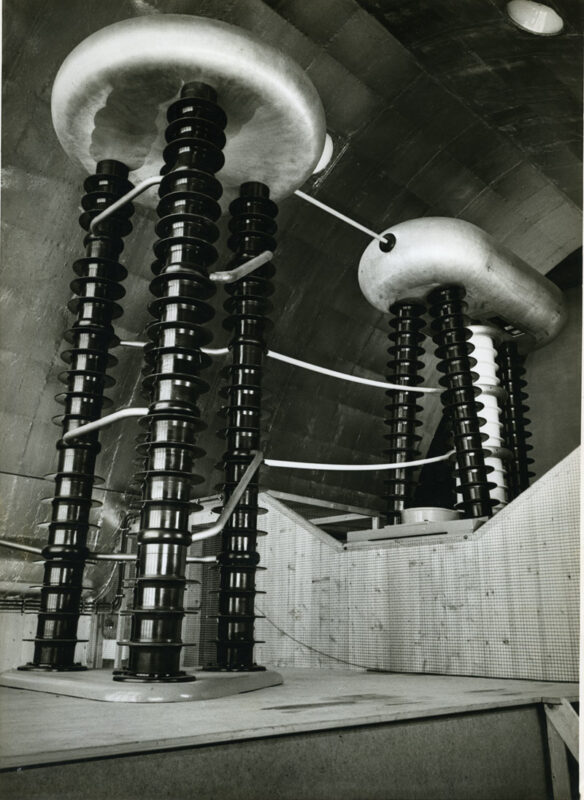
The UG was so proud of its first particle accelerator in 1962. It was a Van de Graaff generator and had been put in a thirty-three-metre-high tower at Physics Laboratory at the Westersingel after this had been renovated. As the Nieuwsblad van het Noorden reported, it was capable of generating five million volts and was going to be used to ‘tease atomic nuclei’ until they ‘revealed all their secrets’.
Physicists would fire protons into a porcelain tube fourteen metres long, accelerating them to a tenth of the speed of light, and then making them collide.
Impressive? Not so much. Retired professor Muhsin Harakeh and professor of nuclear physics Nasser Kalantar with the KVI smile. The machine would never work for real nuclear physics; five million volts means it’s just a little one, says Harakeh.
Much more impressive was the cyclotron that came to Groningen in the seventies, the reason the KVI’s bunker was truly built.
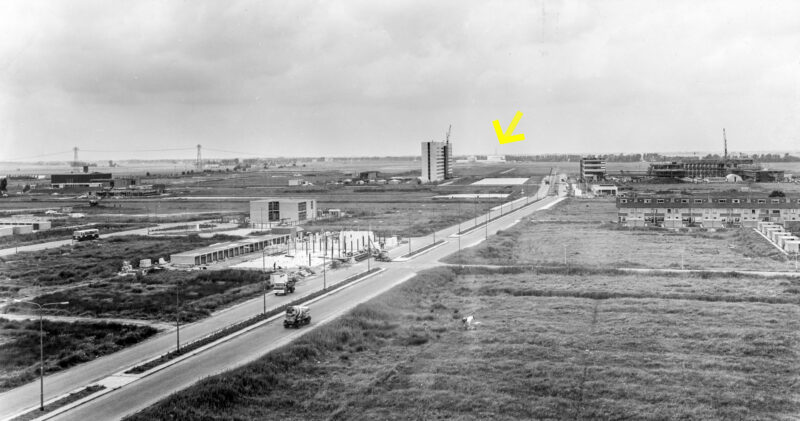
The KVI was one of the first buildings at what’s now known as the Zernike campus, but which back then was called Paddepoel Noord. Construction first started in 1965, all the way in the farthest corner of the area.
The university had only just bought it to start a new campus. That meant there was no way the KVI was going to be built at the Vosbergen estate near Eelde, which is what Henk Brinkman, who’d come up with the idea, had originally wanted.
Another advantage was that there was a dredging sludge depot nearby. If anyone did any research on neutron beams, the measuring stations could shoot them outside where the mud would absorb them. Not that anyone ever did any research on neutron beams there, but it would have been possible.
The project cost twenty million guilders, which at the time was an astronomically high number. But nuclear energy was considered the energy of the future, and the government was prepared to pay good money for it. This was something Brinkman had clued into when he started lobbying for a particle accelerator in Groningen back in 1958.
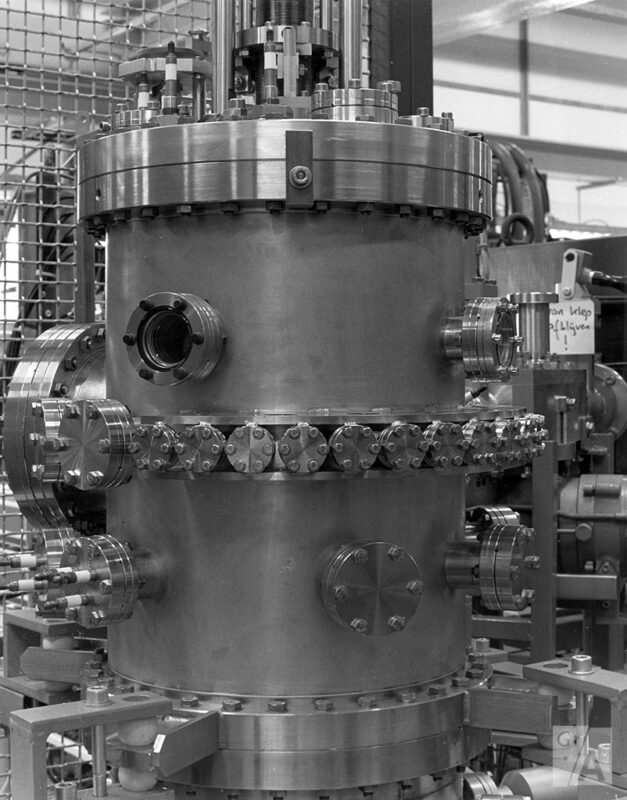
The Azimuthally Varying Field cyclotron (AVF) came to Groningen in 1970 and was housed in the bunker with its two-and-a-half-metre thick walls, a concrete ceiling that was a metre and a half thick, and a giant magnetic ‘yoke’ the cyclotron was installed on.
The cyclotron would accelerate the particles and then shoot them into the ‘experiments hall’ where the actual tests took place.
The nuclear physics research taking place here put Groningen on the international map. In those days, Nasser Kalantar says, the focus was on giant resonances, which involved vibrating all the particles inside an atomic nucleus, something the AVF cyclotron turned out to be very good at.
This research also kept astronaut Wubbo Ockels in Groningen for a while after he’d graduated. He got his PhD at the KVI in 1978, although by that time, he’d already been elected to go into space. Harakeh remembers the crowd of television cameras and journalists during his PhD ceremony.
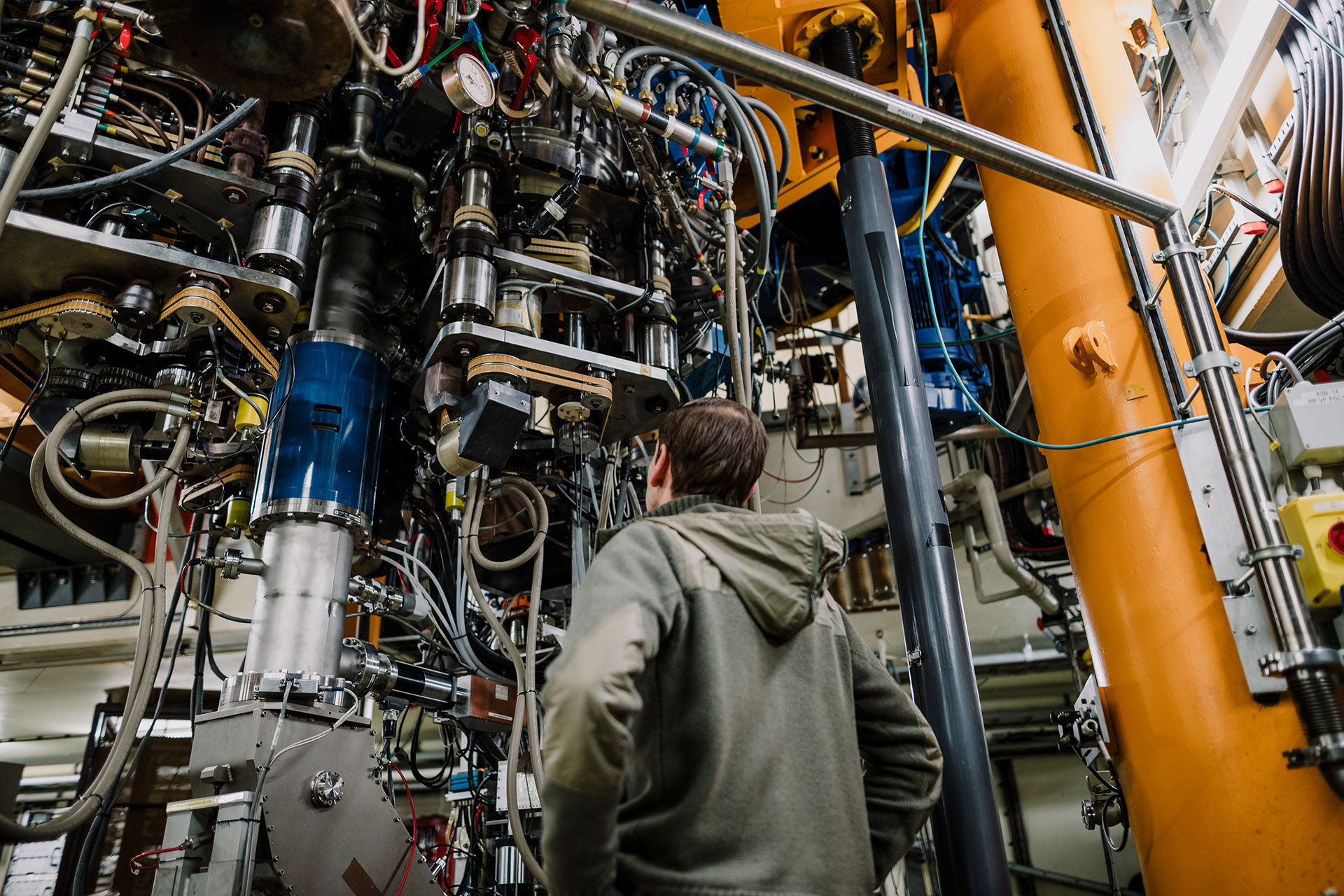
No matter how successful, the cyclotron slowly started to become more limited in its applications. The UG started looking for an alternative.
In 1985, the government coughed up 45 million guilders for a French-Dutch collaboration to build the Accélérateur Groningen-ORsay, also known as AGOR. It’s a super-conductive accelerator that is still working today, even though it officially wasn’t meant to last until after 2015.
It’s a unique piece of equipment. There are hundreds of cyclotrons all over the world, but only a few of them are superconductors, and there’s only one that can accelerator both light and dark particles.
It was actually a coincidence, says Kalantar. Any new accelerator would have to fit inside the building and be able to generate large amounts of energy. The only way this could be done was to install the super-conductive magnets that make it so unique.
The moment AGOR arrived in Groningen in 1994, researchers were able to explore new avenues. AGOR turned out to be particularly suitable for research into medical applications, including the proton therapy that was introduced at the UMCG a few years ago.
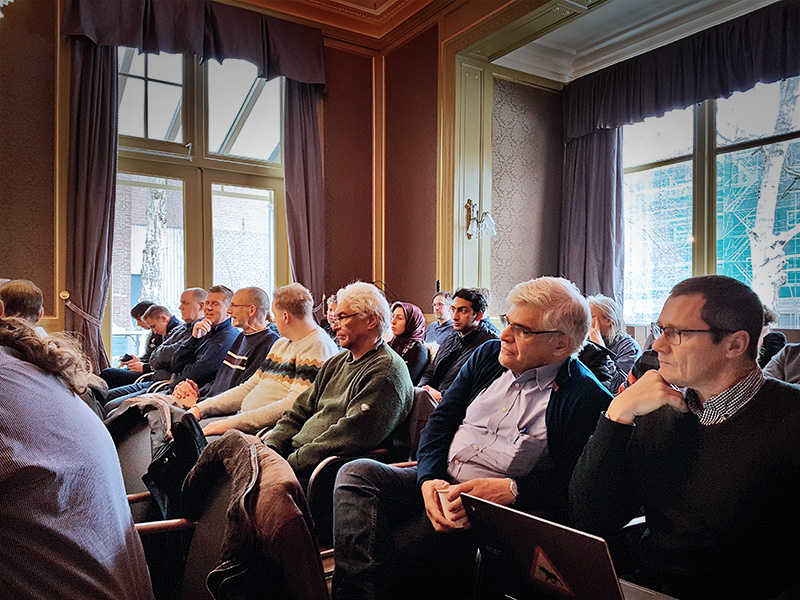
The quality of the research was top notch. Nevertheless, the KVI slowly started being in trouble. Money had always been an issue, says Kalantar. Even back in 1967, chemists were worried that with all the money going to KVI, there wouldn’t be anything left for them. ‘We’ve had to fight for our budget every five years or so.’
But nuclear energy started going ‘out of fashion’ in 2004. Research financier FOM started lowering its annual contribution to the KVI, and while Groningen managed to keep its head above water through international deals, things were taking a downturn.
In 2013, the institute was reorganised. In 2016, when it was still in the red, a rescue plan was set up, but by 2018, the board of directors had decided to get rid of the particle accelerator.
The UMCG swooped in and took it on, together with the employees that kept the accelerator running.
But the UG still lost AGOR, and both Harakeh and Kalantar resent this. ‘We lost the infrastructure’, says Kalantar. ‘That’s a problem, because it means we can’t train any radiation experts, and we need those in the Netherlands.
Harakeh nods. ‘It wouldn’t surprise me if the Netherlands decides we need nuclear physics research again in a few years.’
Sources for this article: A. van der Woude, 40 jaar kernfysisch versneller instituut (Haren 2008) |Klaas van Berkel, Universiteit van het Noorden, parts II and III (Groningen 2017, 2022) | Interviews with Muhsin Harakeh and Nasser Kalantar